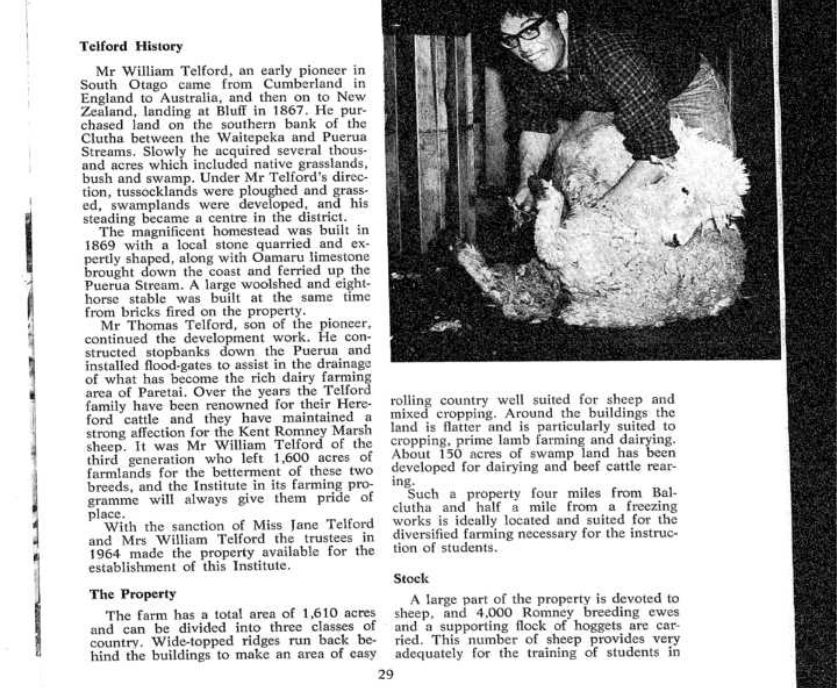 Mr William Telford, an early pioneer in South Otago came from Cumberland in England to Australia, and then on to New Zealand, landing at Bluff in 1867. He purchased land on the southern bank of the Clutha between the Waitepeka and Puerua Streams. Slowly he acquired several thousand acres which included native grasslands, bush and swamp.
Mr William Telford, an early pioneer in South Otago came from Cumberland in England to Australia, and then on to New Zealand, landing at Bluff in 1867. He purchased land on the southern bank of the Clutha between the Waitepeka and Puerua Streams. Slowly he acquired several thousand acres which included native grasslands, bush and swamp.
Under Mr Telford's direction, tussocklands were ploughed and grassed, swamplands were developed, and his steading became a centre in the district.
The magnificent homestead was built in 1869 with a local stone quarried and expertly shaped, along with Oamaru limestone brought down the coast and ferried up the Puerua Stream. A large woolshed and eight-horse stable was built at the same time from bricks fired on the property.
Mr Thomas Telford, son of the pioneer, continued the development work. He constructed stopbanks down the Puerua and installed flood-gates to assist in the drainage of what has become the rich dairy farming area of Paretai. Over the years the Telford family have been renowned for their Hereford cattle and they have maintained a strong affection for the Kent Romney Marsh sheep. It was Mr William Telford of the third generation who left 1,600 acres of farmlands for the betterment of these two breeds, and the Institute in its farming programme will always give them pride of place.
With the sanction of Miss Jane Telford and Mrs William Telford the trustees in 1964 made the property available for the establishment of this Institute. Mr Thomas Telford, son of the pioneer, continued the development work. He constructed stopbanks down the Puerua and installed flood-gates to assist in the drainage of what has become the rich dairy farming area of Paretai. Over the years the Telford family have been renowned for their Hereford cattle and they have maintained a strong affection for the Kent Romney Marsh sheep. It was Mr William Telford of the third generation who left 1,600 acres of farmlands for the betterment of these two breeds, and the Institute in its farming programme will always give them pride of place.
With the sanction of Miss Jane Telford and Mrs William Telford the trustees in 1964 made the property available for the establishment of this Institute.
Source: National Library of New Zealand: No.67 (July 1969)
View Journal